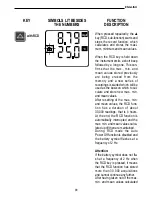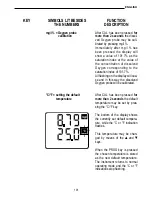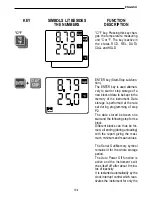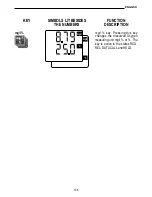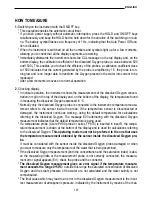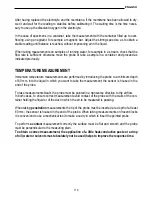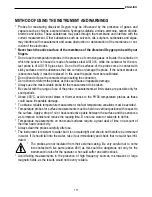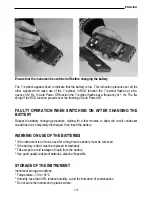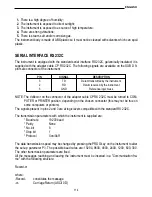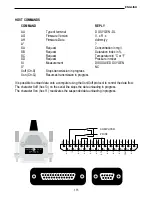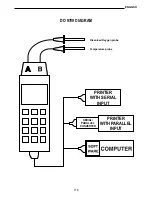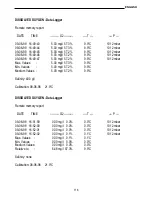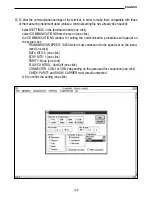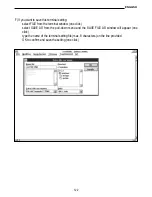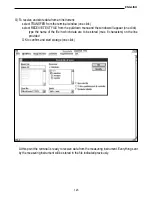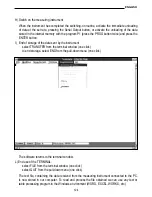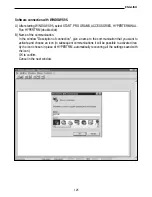
METHOD OF USING THE INSTRUMENT AND WARNINGS
* Probes for measuring dissolved Oxygen may be influenced by the presence of gases and
vapours such as chlorine, sulphur dioxide, hydrogen sulphide, amines, ammonia, carbon dioxide,
bromine and iodine. These substances may pass through the membrane and interfere with the
current measurement. Other substances such as solvents, oils, sulphurs, carbonates and algae,
may interfere with measurement and cause obstruction or deterioration of the membrane or cor-
rosion of the electrodes.
* Never touch the active surface of the membrane of the dissolved Oxygen probe with your
fingers.
* Do not use the temperature probes in the presence of corrosive gases or liquids; the container in
which the sensor is housed is made of stainless steel AISI 316, while the container for the con-
tact probe is of AISI 316 plus silver. Do not let the surfaces of the probe come in contact with
sticky surfaces or with substances that can corrode or damage the probe. If the sensor breaks or
is becomes faulty it must be replaced. In this case the probe must be recalibrated.
* Do not bend or force the contacts when inserting the connector.
* Do not bend or deform the probes as this could cause irreparable damage.
* Always use the most suitable probe for the measurement to be taken.
* Be careful with the range of use of the probe, measurements at limit values are possible only for
short periods.
* Above 400°C, avoid violent blows or thermal shock to the Pt100 temperature probes as these
could cause irreparable damage.
* To obtain a reliable temperature measurement, too fast temperature variations must be avoided.
* Temperature probes for surface measurements must be held in a vertical position with respect to
the surface. Apply a drop of oil or heat-conductive paste between the surface and the sensor so
as to improve contact and reduce the reading time. Do not use water or solvents to do this.
* Temperature measurements on non-metal surfaces require a great deal of time on account of
their low heat conductivity.
* Always clean the probes carefully after use.
* The instrument is resistant to water but it is not watertight and should not therefore be immersed
in water. If it should fall into the water, take it out immediately and check that no water has infil-
trated.
* The probes are not insulated from their external casing. Be very careful not to come
into contact with live parts (above 48V) as this could be dangerous not only for the
instrument but also for the operator, who could suffer an electric shock.
* Avoid taking measurements in the presence of high frequency sources, microwaves or large
magnetic fields, as the results would not be very reliable.
ENGLISH
111



